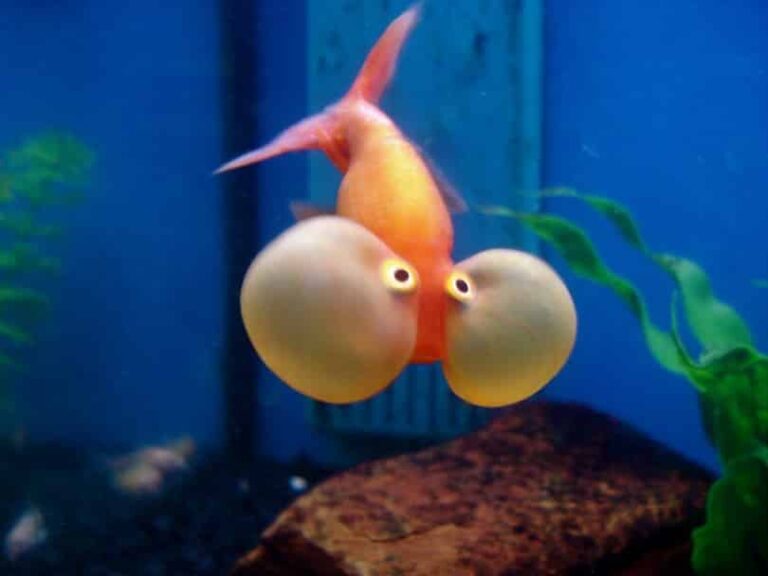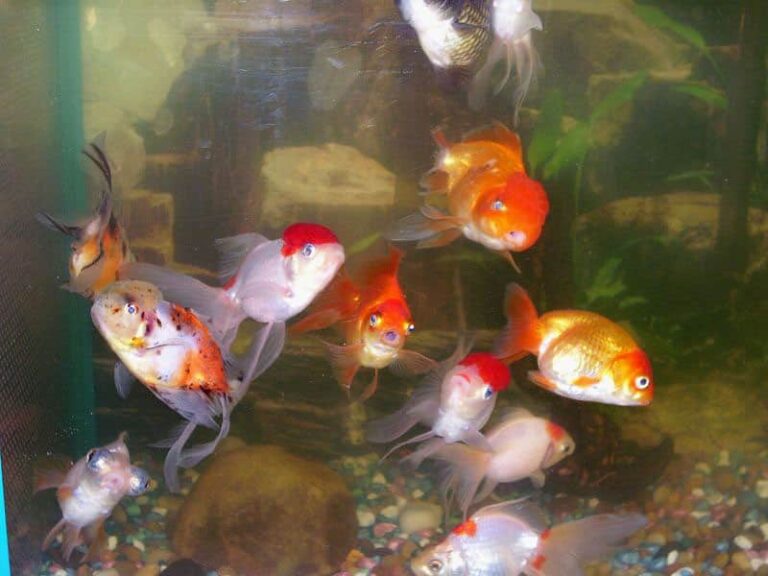Fish Skeleton – Bone Structure of Spectacular Water Creatures
Fish are sea creatures that are found in oceans, lakes, rivers, and other water sources all around the world. Fish species are divided into two parts, and this division is according to the skeleton types.
Cartilaginous and bony fish make up the majority of the world’s fish species. A fish classified as cartilaginous comes with a skeleton formed of soft, flexible cartilage, whereas a fish is classified as a bony structure.
Since you came across this article, you must be curious to learn more about the fish skeleton. So, below, you will find some of the major information and facts about the amazing creatures of our world.
Biology Of Fish
Fish are aquatic organisms that fall within the Pisces superclass. In the taxonomic order, fish fall within the phylum Chordata of the kingdom Animalia in the taxonomic order. They are divided into a variety of classes.
The majority of them are cold-blooded, ectothermic creatures. They display a variety of body structures, following the behavior and traits of nature. The majority of them have a strong, sturdy fish skeleton.
Anatomy of Fish Skeleton
Fins, streamlines, scales, and tails are some of a fish’s general characteristics. But beyond their outward appearances, they differ. As a result, categorization based on the types of the skeleton is significantly simpler. Aquatic areas contain a diversity of fish.
Some of these species are bony fish, while others are cartilaginous fish. Fishes’ skeletons can be made of either hard bones that consist of calcium or thin, flexible cartilage. They have bodies that are suited for swimming, and they can proficiently move around the water.
A fish skeleton that belongs to the bony fish resembles an arrow, with the skull standing in for the arrow’s head, the spine for the arrow’s shaft, and the tail for the feathers.
Skeleton Types
There are two basic kinds of skeletons: the exoskeleton serves as an organism’s sturdy exterior shell. The second type, the endoskeleton, provides the body’s internal support system.
The endoskeleton is not only used to support the organs and flesh of the body, but it is also the producer of white blood cells. Additionally, the fish skeleton also stores minerals. The fish bones have a pretty complex structure internally and externally. They are pretty lightweight and can be very firm.
The fish skeleton is made from several structures and parts. It includes the tail, spine, dorsal fin, gill cover, pectoral fin, lower jaw, and skull.
Bony Fish Skeleton
Fish are creatures that belong to the group of vertebrates. This means that the fish skeleton has a skull and a spine. The fish skeleton is the main tool that keeps the rest of the body together. It supports and protects the flesh. The interesting thing about the fish skeleton is that some parts of it merge with the skin.
As the fish grows, the skeleton becomes like the plates that are built into the skin. The fins are used for steering in the water. As for the fishtail, it works like a paddle. With the tail, the fish gains balance and moves around.
Bony fish have craniums, which are solid, hard bones that start at the head. The brain is shielded from mechanical pressure by the skull. Osteichthyes have movable jaws that make it easier for them to eat. Fish without jaws include hagfish and lamprey. They maintain their underwater depth with the help of swim bladders. Otoliths are distinctive features of a bony fish’s ear plates that aid with stability.
Gills are a pair of breathing structures. These organs aid fish in breathing by assisting organisms in absorbing dissolved oxygen from the water. Three sets of bones support the gills. These bone pairs, known as gill arches, are constructed from bony filaments.
Fish need their fins to survive. They aid in stability, steering, and propulsion. While two types of fins, the dorsal and caudal, aid in propulsion and stability, respectively, paired fins serve as the steering mechanism.
Diet Of Bony Fish
Depending on the species, a bony fish’s diet may consist of plankton, crustaceans (like crabs), invertebrates such as sea urchins, and even other smaller fish. Some bony fish species consume both plants and animals, making them almost omnivores.
The behavior of bony fish differs substantially between species. For protection, smaller fish species swim in groups. While certain fish, such as tuna, constantly swim, stonefish and flatfish spend the majority of their time resting on the ocean floor.
Bony Fish Evolution
The earliest organisms resembling fish initially emerged around 500 million years ago. Around 420 million years ago, the different types of fish, cartilaginous fish, and bony fish, split into two distinct groups.
For a good reason, cartilaginous animals are occasionally considered to be more primitive. Land-dwelling animals with bony skeletons eventually evolved from fish with bony fish skeletons. Additionally, the bony fish’s gill structure served as a precursor to the development of the lungs’ ability to breathe air. Therefore, bony fishes are closer relatives to humans.
Cartilaginous Fish Skeleton
There are also different types of fish, like the ones that do not have firm skeletons. Instead, their bones are made of cartilage. This is the same material that the human ears are made from. Yet, the cartilages that are found in rays and sharks come with additional minerals. This mineral makes the cartilage harder and firmer.
In addition to having different skeletons, those fish have slit-like openings for their gills to the seawater, as opposed to the bony covering found in bony fish. The number of gill slits may vary across shark species.
Rather than using their gills, cartilaginous fish may alternatively breathe through spiracles. All rays, skates, and certain sharks have spiracles on the top of their heads. This allows them to rest on the ocean floor and pull oxygenated water into their heads. So they do not have to breathe in the sand.
The skin of a cartilaginous fish is wrapped in placoid scales, also known as dermal denticles, which resemble teeth as opposed to the flat scales (also known as ganoid, ctenoid, or cycloid) seen on bony fish.
Diet of Cartilaginous Fish
The nutrition of cartilaginous fish differs by species. In addition to eating fish and marine animals like seals and whales, sharks are significant apex predators. Most of their diets consist of bottom-dwelling organisms, including clams, crabs, shrimp, oysters, rays, and skates that consume these invertebrates. Huge cartilaginous fish that eat small plankton include manta rays, whale sharks, and basking sharks.
Cartilaginous Fish Evolution
The first sharks developed some 400 million years ago, according to research. Hammerheads, Megalodon, and white sharks first appeared approximately 23 million years ago, and “modern” sharks began to appear around 35 million years ago.
The planet is home to a variety of cartilaginous fish, including rays that live in shallow waters with sand bottoms and sharks that dwell in the open ocean’s depths.
Exceptional Fish Species
Even though the fish world consists of many different species, there are still some exceptions – the creatures that do not follow the rules of nature. For example, hagfish are considered to be vertebrates, yet they do not come with scales.
Other exceptions are species that do not live in water; such creatures are amphibious fish and mudskippers. The unique organism, lungfish, does not have gills like any other fish. Instead, they breathe with the lungs. And finally, not all fish are cold-blooded. The lamprey fish and tuna are warm-blooded creatures. They do not have paired fins.
Interesting Facts About Fish
Sensory Capabilities of Fish
Because of their exceptional perceptive abilities, salmon is regarded as one of nature’s greatest navigators. Salmon return to the river where they were born. Magnetic fields are a great help in the process. It is thought that salmon can identify pheromones particular to their home stream thanks to their ability to smell substances at a concentration of one part per million.
Memory of Fish
Fish do have excellent memories, contrary to common assumptions. Some fish species can identify and recall people who give them food incentives. Cleaner fish can identify up to 100 distinct fish that are their frequent customers. Additionally, they may recall and identify their particular cleaner.
Fish can recall musical melodies, and one team of researchers fed their fish when a particular song was played before setting them free. After they were gone for five months. The scientists played the same song. As a result, the fish came back.
Social Interaction
Fish species interact and develop communication with one another. For instance, several fish species serve as “cleaners” for larger fish. Both the “customers” and the cleaners profit from the parasites being removed from the large fish. This also provides food for the cleaners.
Bottom Line – Fish Skeleton
In this article, we reviewed one of the most spectacular living organisms around the world. We explored the fish skeleton, its types, and its characteristics. According to science, 50% of the world’s living animals are considered fish. The approximate number of fish species that exist today is 33,000, yet they are not all explored yet.

Nato is a content writer and researcher with a background in psychology who’s eager to explore the wonders of nature. As a travel enthusiast and animal lover, she hopes to inspire others to discover and cherish the beauty and importance of the natural world.







